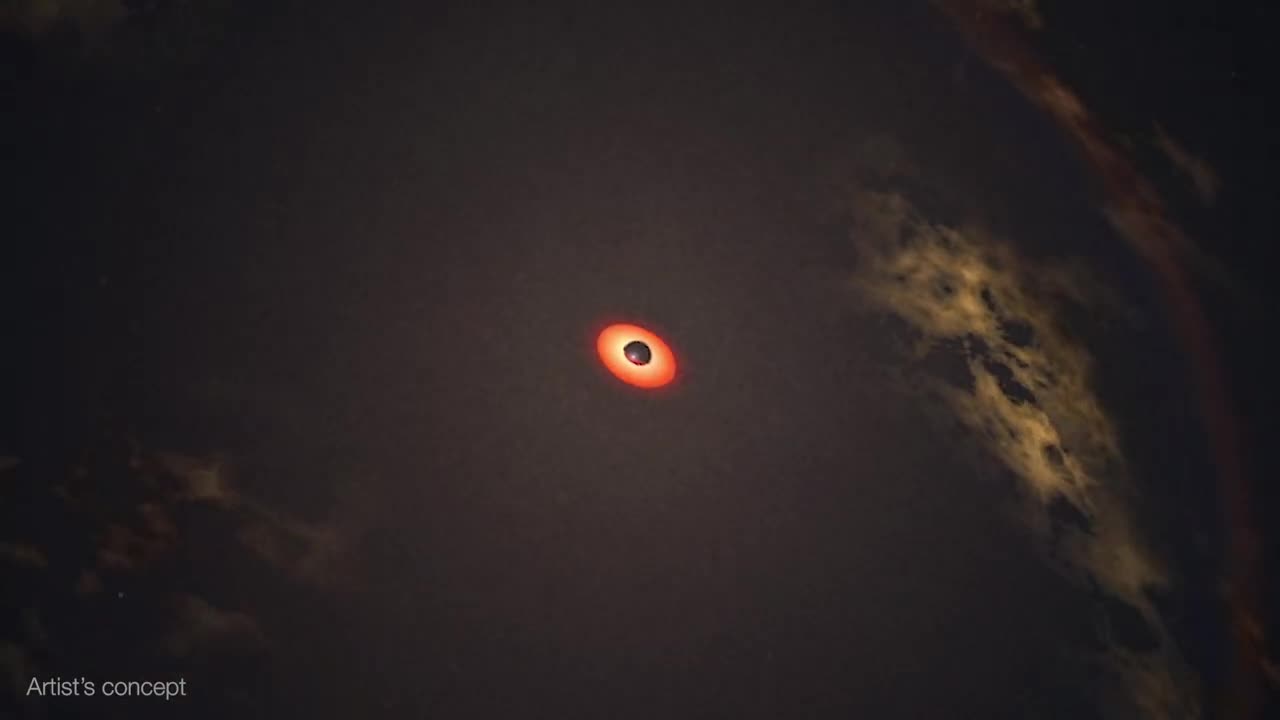Premium Only Content

Using NASA’s Neil Gehrels Swift Observatory, which launched in 2004, scientists have discovered a black hole in a distant galaxy repeatedly nibbling on a Sun-like star. The object heralds a new era of Swift science made possible by a novel method for analyzing data from the satellite’s X-ray Telescope (XRT).
When a star strays too close to a monster black hole, gravitational forces create intense tides that break the star apart into a stream of gas. The leading edge swings around the black hole, and the trailing edge escapes the system. These destructive episodes are called tidal disruption events. Astronomers see them as flares of multiwavelength light created when the debris collides with a disk of material already orbiting the black hole.
Recently, astronomers have been investigating variations on this phenomena, which they call partial or repeating tidal disruptions.
During these events, every time an orbiting star passes close to a black hole, the star bulges outward and sheds material, but survives. The process repeats until the star looses too much gas and finally breaks apart. The characteristics of the individual star and black hole system determine what kind of emission scientists observe, creating a wide array of behaviors to categorize.
On June 22, 2022, XRT captured Swift J0230 for the first time. It lit up in a galaxy around 500 million light-years away in the northern constellation Triangulum. Swift’s XRT has observed nine additional outbursts from the same location roughly every few weeks.
Scientists propose that Swift J0230 is a repeating tidal disruption of a Sun-like star orbiting a black hole with over 200,000 times the Sun’s mass. They estimate the star loses around three Earth masses of material on each pass. This system provides a bridge between other types of suspected repeating disruptions and allowed scientists to model how interactions between different star types and black hole sizes affect what we observe.
Swift J0230’s discovery was possible thanks to a new, automated search of XRT observations called the Swift X-ray Transient Detector.
After the instrument observes a portion of the sky, the data is transmitted to the ground, and the program compares it to previous XRT snapshots of the same spot. If that portion of the X-ray sky has changed, scientists get an alert. In the case of Swift J0230, astronomers were able to rapidly coordinate additional observations of the region
-
 LIVE
LIVE
SpartakusLIVE
5 hours agoEXPLOSIVE $400+ 2v2 Tuesday has viewers GLUED to the screen
462 watching -
 3:19:06
3:19:06
GrimmHollywood
4 hours ago🔴LIVE • GRIMM'S TUESDAY FRIGHT NIGHT • STARRING GRIMM HOLLYWOOD • NO, I'M NOT HUMAN PART 1 •
18.5K1 -
 1:21:01
1:21:01
Flyover Conservatives
11 hours agoAI Encouraged Suicide: The Global Experiment on Our Kids - Joe Allen | FOC Show
27.2K3 -
 1:07:40
1:07:40
Glenn Greenwald
6 hours agoTucker Carlson on Charlie Kirk Assassination Fallout, Free Speech, Foreign Policy, and the Reaction to his Kirk Remarks | SYSTEM UPDATE #520
164K108 -
 14:22
14:22
Robbi On The Record
2 days ago $0.66 earnedGen Z’s Narcissism Obsession: Why Everyone’s a “Psychologist”
28.4K11 -
 LIVE
LIVE
GritsGG
7 hours agoQuad Win Streaks!🫡 Most Wins in WORLD! 3600+
403 watching -
 1:09:28
1:09:28
Sarah Westall
4 hours agoCan the World Be This Strange? The Nature of Our Reality w/ Darius J Wright
32.7K2 -
 1:58:20
1:58:20
megimu32
4 hours agoOn The Subject: Friends | 31 Years of the Sitcom That Defined a Generation
33K5 -
 30:00
30:00
BEK TV
1 day agoCounter Culture Mom
8.44K -
 1:24:54
1:24:54
Kim Iversen
7 hours agoTylenol vs Vaccines: Which One Is The REAL Cause Of Autism? The Truth Will Upset You
62.5K73